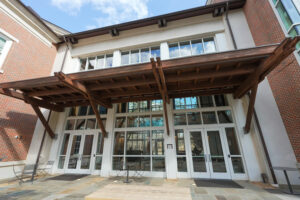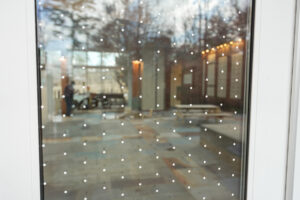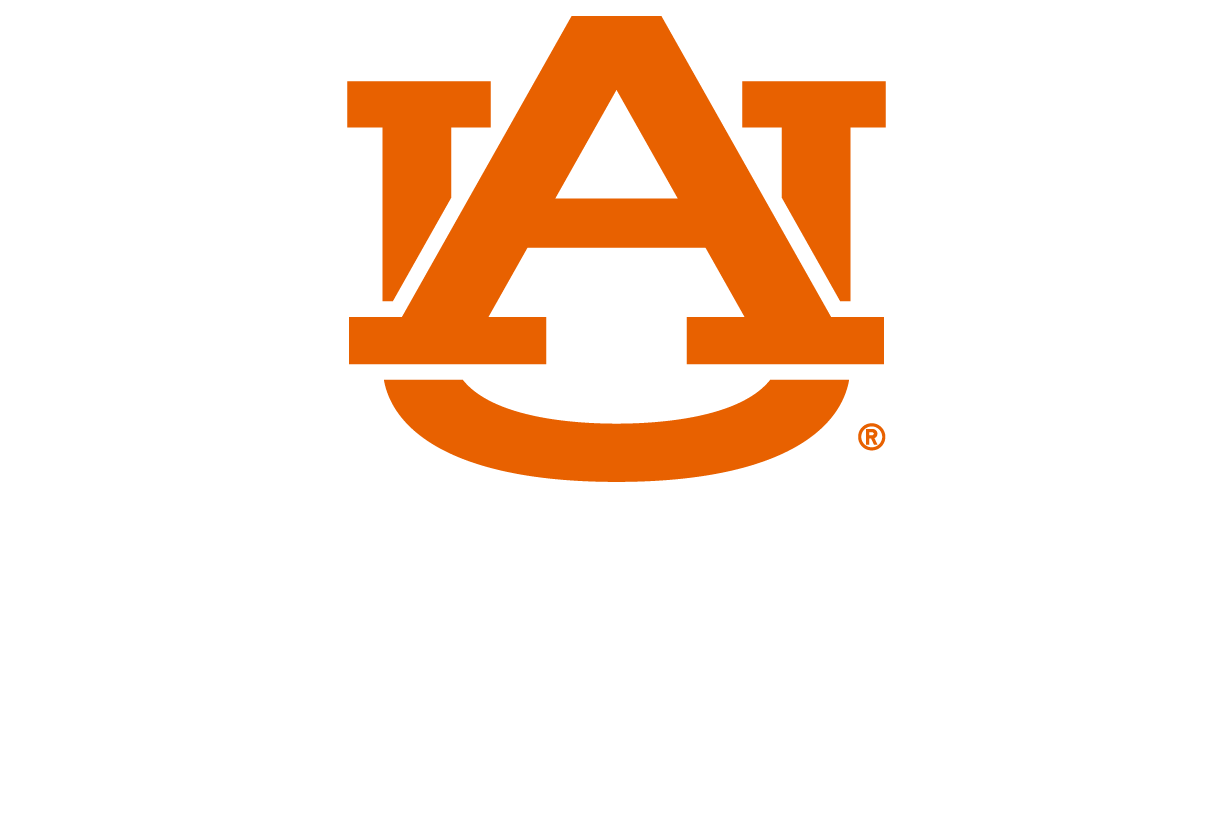
CFWE windows feature low-profile decals placed on windows to reduce bird mortality.
In a concerted effort to reduce bird-window collisions, Alabama Audubon has partnered with the Auburn University College of Forestry, Wildlife and Environment (CFWE) to install window decals on CFWE buildings.
Bird strikes typically occur when birds fail to recognize reflective or transparent surfaces as barriers. Glass windows, which often mirror the sky or surrounding vegetation, can create a deadly illusion, leading to thousands of bird fatalities annually.
Leading the effort from the CFWE is Todd Steury, associate dean of academic affairs and professor of wildlife biology, who has long-advocated for measures to reduce human-wildlife conflicts.
“Bird-window collisions are a problem that the college has struggled with for a while now,” said Steury. “Faculty and students frequently express their desire to do something to reduce the bird mortalities. Unfortunately, we have, until now, been unable to find an acceptable solution. Thanks to the Alabama Audubon, we hope that we can finally put this challenge behind us.”
Alabama Audubon, an organization dedicated to conserving and improving Alabama’s birdlife, is lending its expertise and resources to this initiative. The decals, which are specially designed to make glass surfaces more visible to birds, are a simple, yet effective solution. Using scientifically researched patterns of dots placed on the outside surfaces of windows, the decals help birds identify windows as solid objects, thereby reducing the likelihood of collisions. These decals were given to the CFWE to help manage their local birdlife. Lianne Koczur, Alabama Audubon’s science and conservation director, highlights the importance of collaboration in tackling this widespread problem.
“We have had a great group of volunteers monitoring window collisions across campus over the last two years, and they have collected great data on the extent of this problem there,” said Koczur. “I think they have also helped raise awareness about bird-window collisions – something many people still don’t know much about. I’m thankful for the students and faculty at Auburn who want to start working on fixing this issue. None of this work would be possible without these types of collaborations. It can be difficult to tackle such a huge problem like this but when we work together and start getting more people involved, we can make progress, and that’s a huge win. Auburn is saving bird lives, and everyone there should be proud of that.”
Based on their design and location, the installation process began with CFWE buildings identified as high-risk for bird strikes. Volunteers from the CFWE, Alabama Audubon and student organizations worked together to apply the decals, turning the initiative into a community effort.

Small, specially placed decals placed on windows help birds identify them as solid objects.
Early feedback from the initiative has been overwhelmingly positive. Students and faculty have expressed their support, noting the decals as a tangible representation of Auburn’s commitment to environmental stewardship. The decals’ subtle designs ensure they blend seamlessly with the buildings’ aesthetics while serving their vital purpose.
The Kreher Preserve and Nature Center, an outreach program of the College of Forestry, Wildlife and Environment, has also made strides to reduce bird strikes with the installation of the decals on the newly constructed Environmental Education Building, purchased with support provided by Kaitlin McWane.
Steury and Koczur hope that this project will inspire other institutions across Alabama and beyond to take similar actions.
“It’s great that we’ve finally found a relatively simple solution that does such a good job of reducing bird mortality,” said Steury. “I would love to see the technique applied to more buildings on campus where window strikes are an identified problem.”
As the decals continue to save lives and spark conversations, this partnership between Alabama Audubon and the CFWE stands as a model for collaborative, impactful conservation efforts, which proves that small changes can lead to big results when communities come together to protect natural resources.









